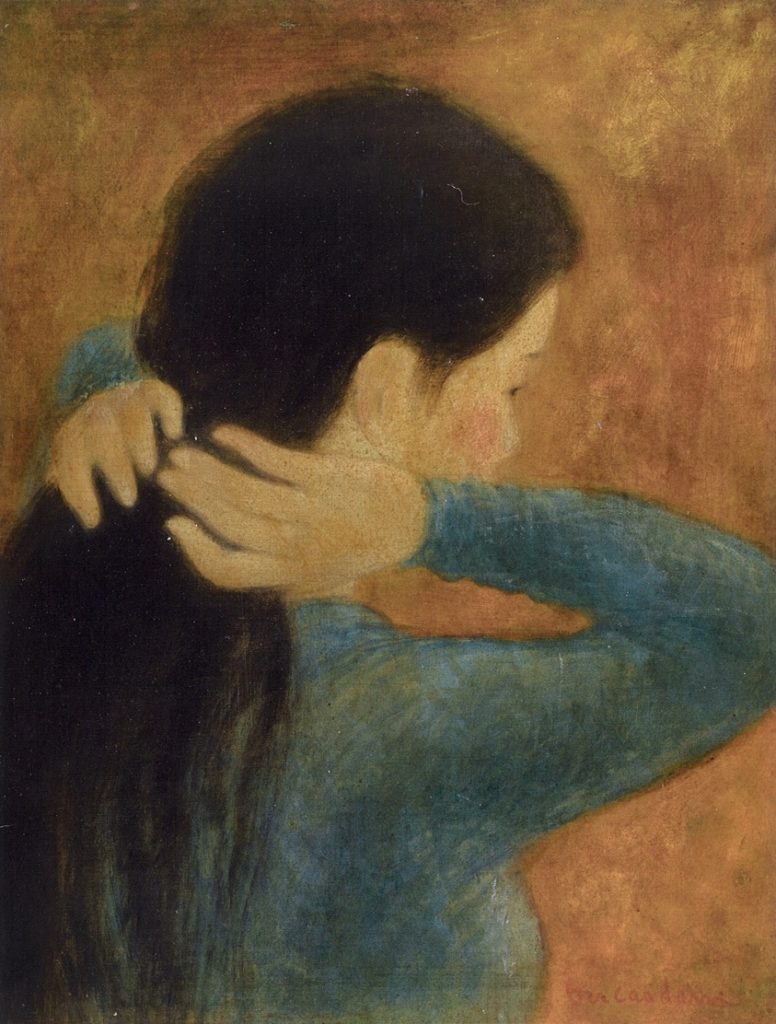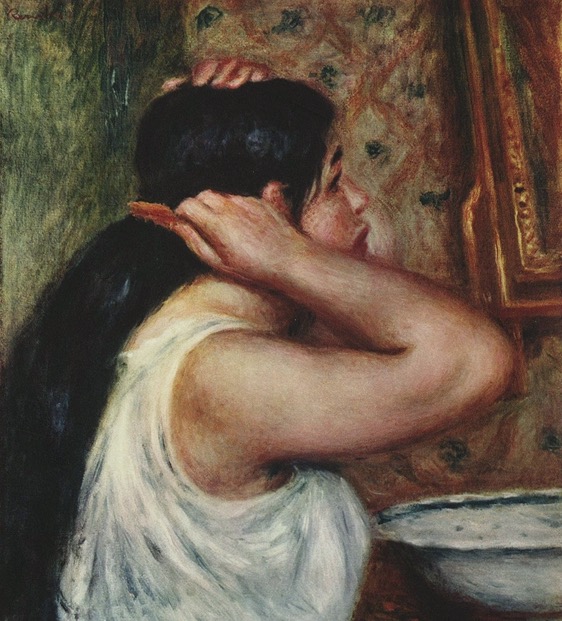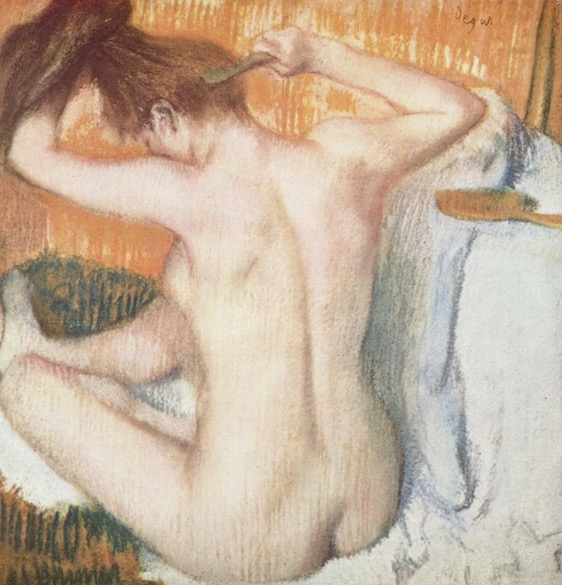Vu Cao Dam. 1951, « Jeune Femme à Sa Coiffure » or Anna is no longer Anna
In 1950, Vu Cao Dam, whose asthma was steadily getting worse, decided to leave Paris for a place that would be better for his health. He chose to move to Béziers with his wife Renée, their children Yannick and Michel, his niece Anna and niece’s family. He lived there for two years and this is where he painted « Jeune femme à Sa Coiffure » (Young Lady at her Dressing Table).

The southern part of France, the « Midi » , was a revelation for Vu Cao Dam : the light and Mediterranean landscapes ; his painting underwent profound transformation.
Until this time, the people Vu Cao Dam painted, in Paris, offered undeniable affinities with those of the masters of the period preceding the Renaissance, that he particularly admired, mainly the Flemish Primitives. In Béziers, his human figures, though still situated in the world of Vietnam, were incontestably influenced by the art of the Italian Renaissance and also by Jean Clouet. It is in the works of this period that one can best note and admire the pictorial mastery worthy of the greatest masters, mainly of Classical art (which was extremely rare during those years).
His niece Anna, was the model for this painting. She constantly reminded him of his native country ; always clothed in traditional Vietnamese ao dai, suavely gentle, she embodied the refined grace of the ladies of high society in Vietnam. Through her, the country of his former life (1908-1931) came back to life before Vu Cao Dam’s eyes. His painting « fleshed out », expressing reality more than dreams and becoming more naturalistic.
After the cold and greyness of Paris that had seriously compromised his well-being, he regained his health in the heat of the Midi and its luminosity ; this physical awakening expressed itself mentally in his art by renewed inspiration. In the Béziers of that time and at his age he found himself in a sort of cultural desert without a single artist with whom he could discuss painting. He therefore distanced himself from the main currents that influenced his time and followed a totally original path. A few rare artists, such as Derain or Picabia, had come back to more figurative creations, but they remained the exception (and they were not cut off from their times), as the period definitely saw a distancing from the figurative.
In 1952, a year after our painting, Vu Cao Dam left Béziers to move to the Côte d’Azur, where he found a concentration of painters with whom he could conduct rich exchanges of thoughts, allowing his painting to fully take its place in its century.

« La Toilette : femme se peignant » Auguste Renoir, 1907 
« Après le bain » Edgar Degas, 1884
Around 1953 he will look for new processes, moving away from pure gouache and silk. He will adopt new ingredients (egg white, caparol and others) on more rigid supports. The reflection of the glass – covering the silk through the frame – will lead to its demise.
But, here, in the lofty tradition of the theme of the « Jeune Femme à sa Toilette » dear to the pitiless Degas or the sensual Renoir, Vu Cao Dam, with the discretion and delicacy that characterize him, explored in this rare work one of the secret moments of a young lady, that in which she « recreates her beauty ». Shown at an angle from which she cannot know that she is being observed – which would certainly have been a source of embarrassment – this young lady places an essential milestone in the master’s work : the painter took a remarkable step here, in differentiating himself from Vietnamese tradition that cannot conceive of an attitude with this degree of informality (Anna’s great-uncle was a great mandarin, whom even his children neither approached nor left without repeated signs of their reverence).
The thin, dark touch of Anna’s eye does the whole painting. It introduces into the work all the personality of the young woman whose curve of the chest and the charming modeling of the shoulders suggested by ao dai give it a sort of virginal sensuality.
So yes, it is Anna, the Vietnamese in France. But the artist’s style is everything: Anna is no longer Anna.
Jean-François Hubert